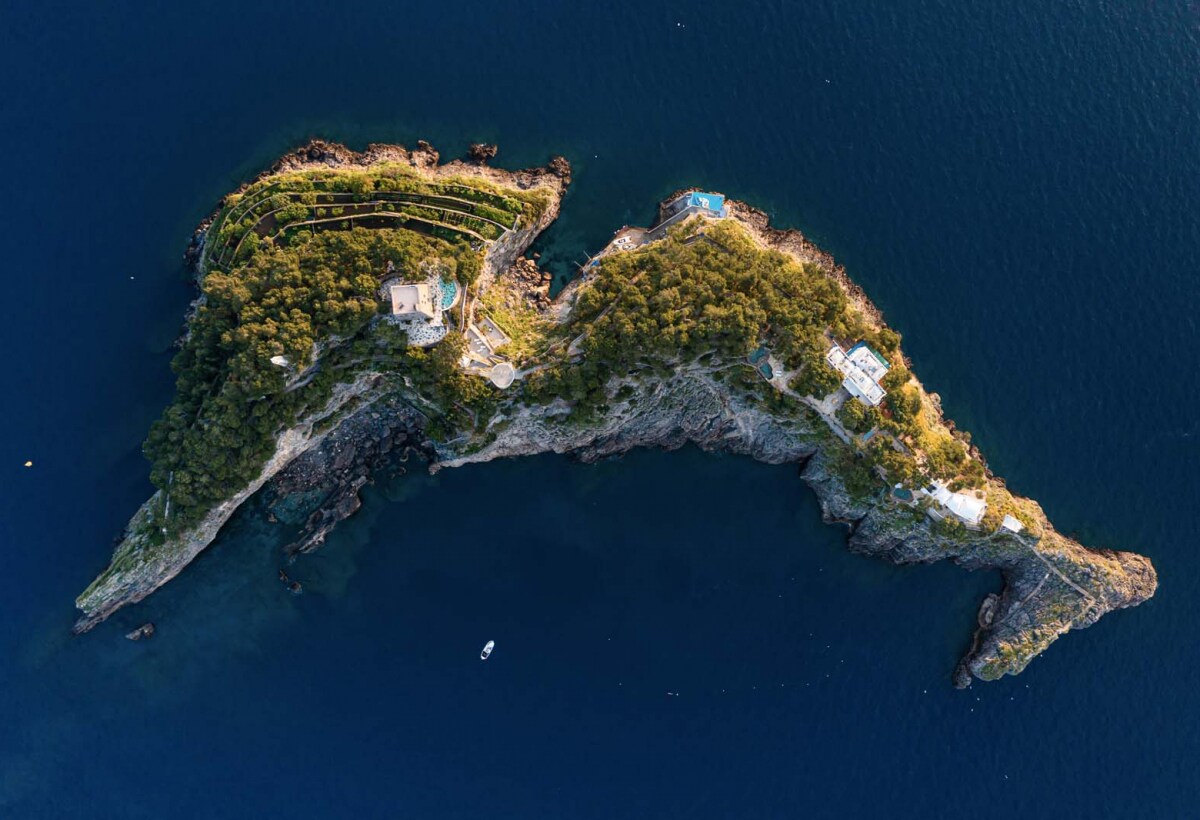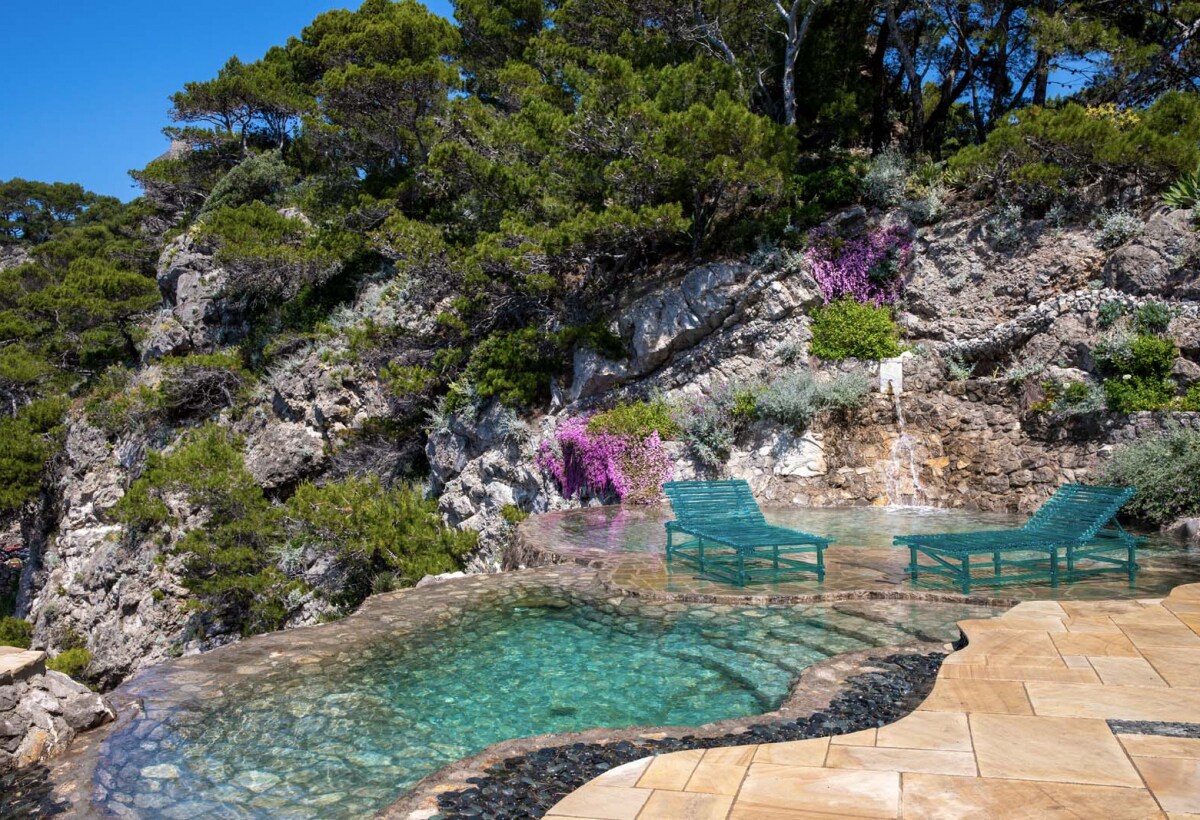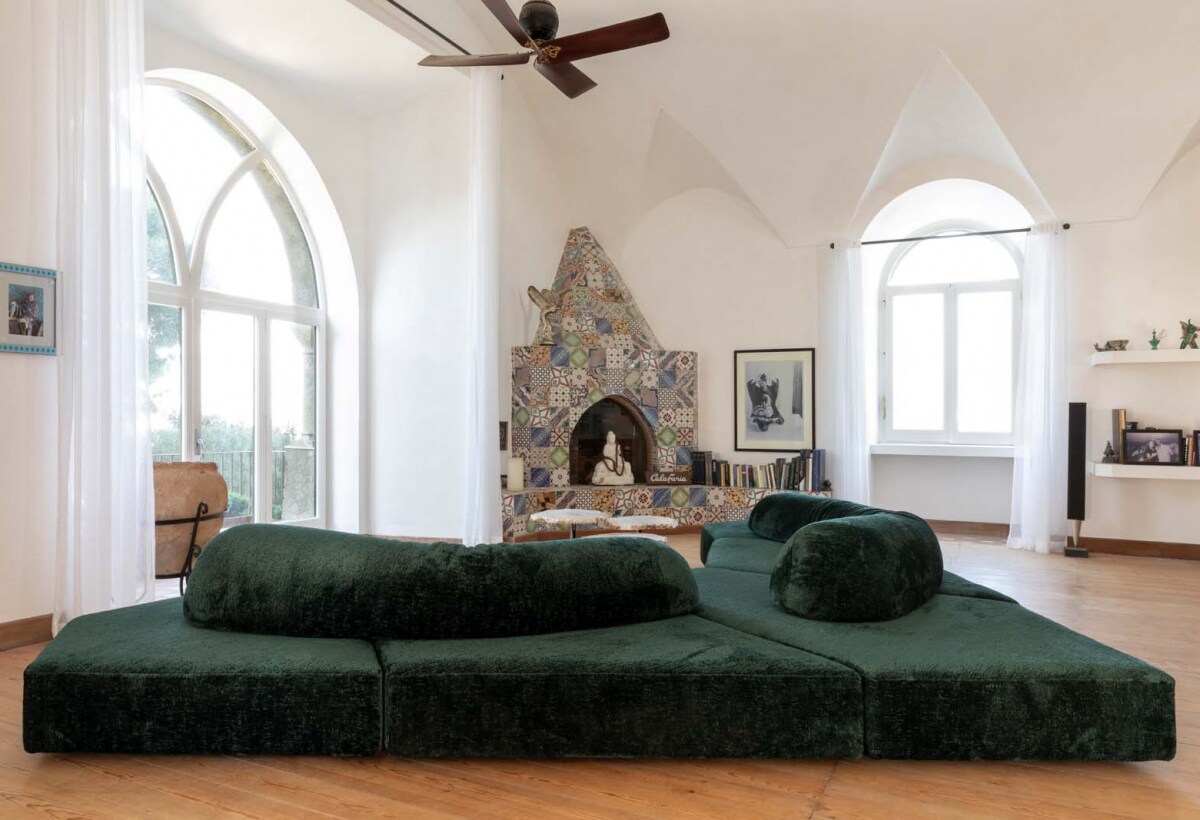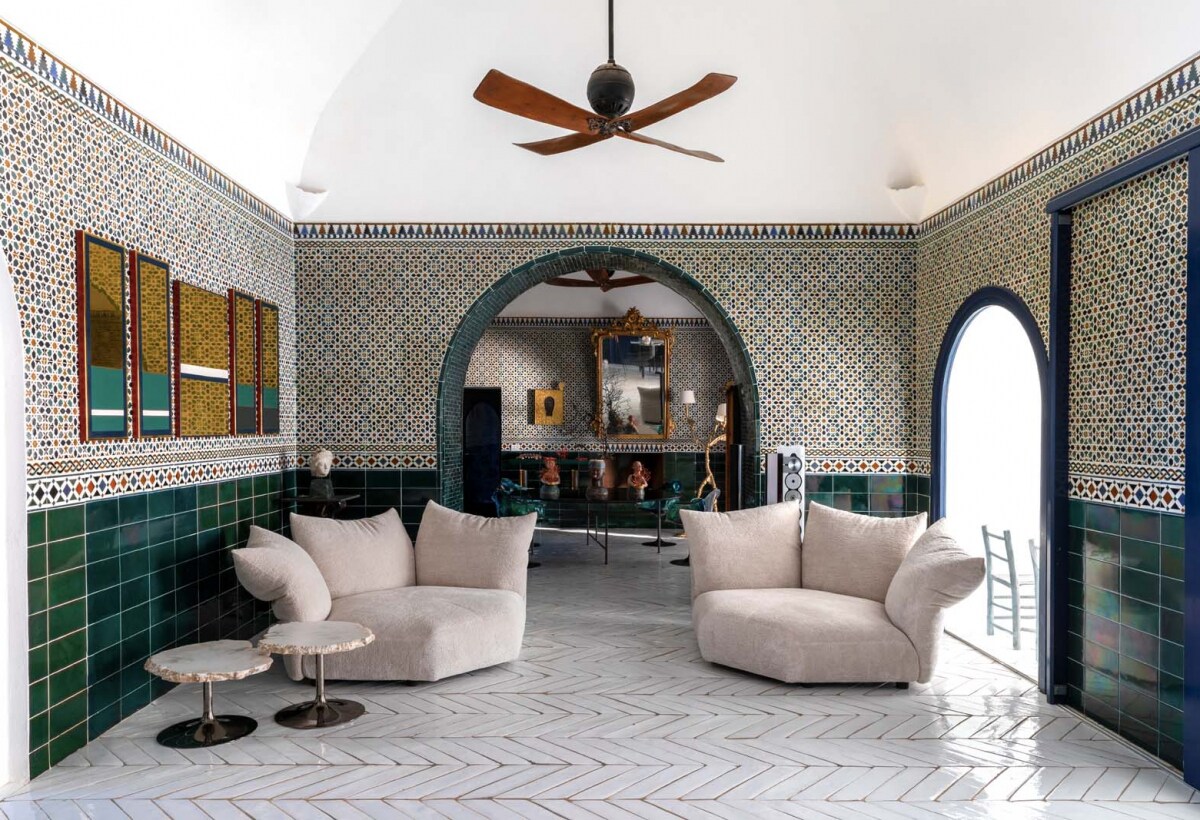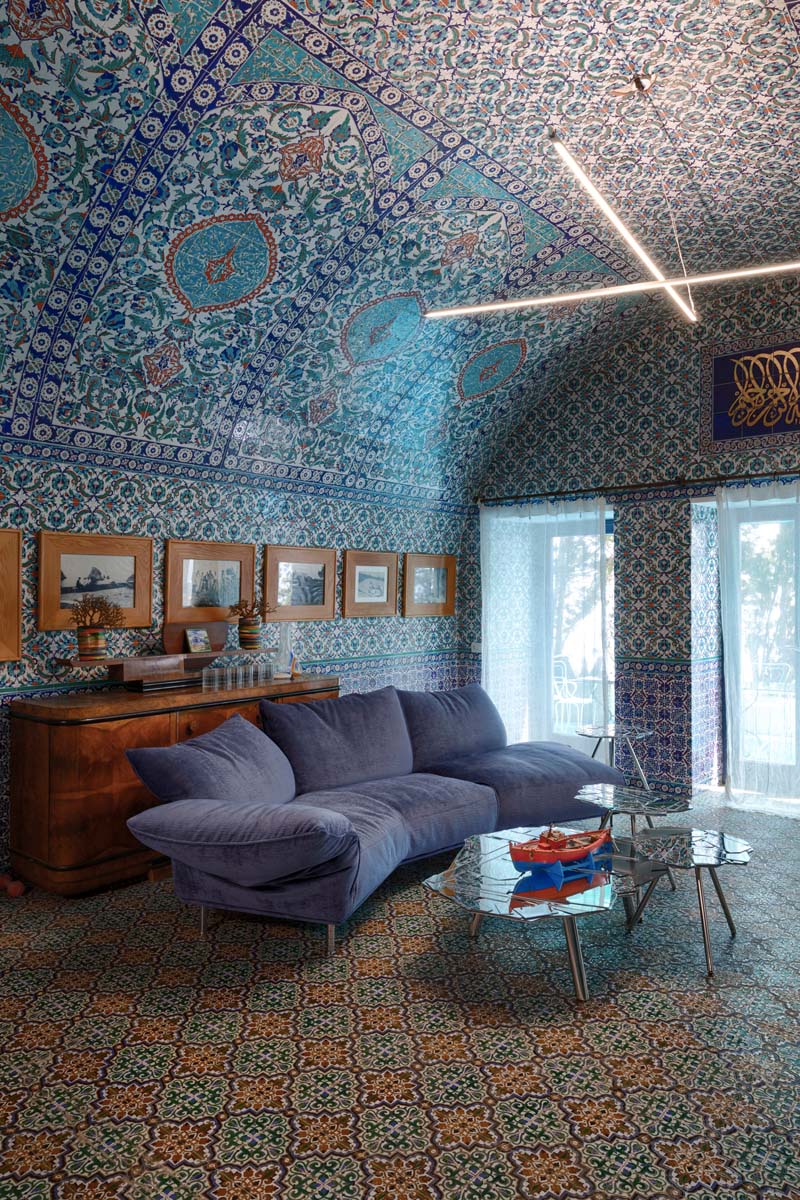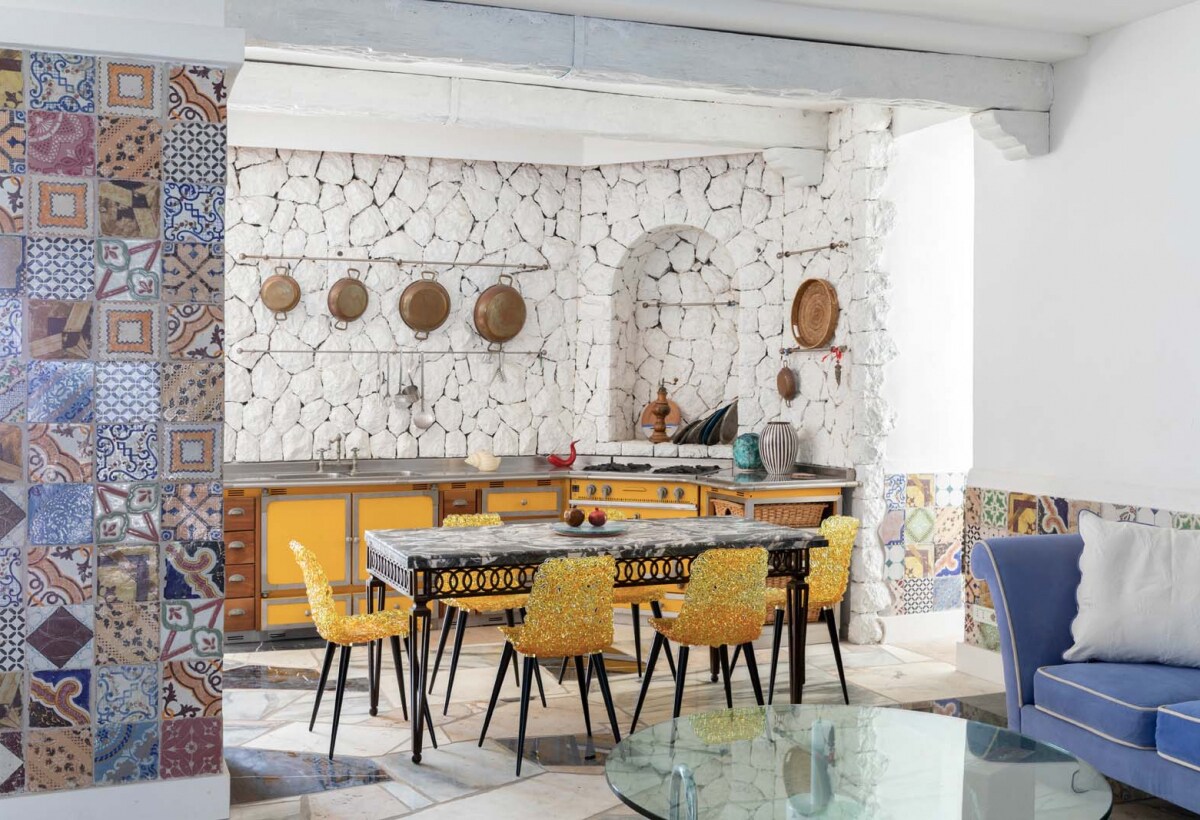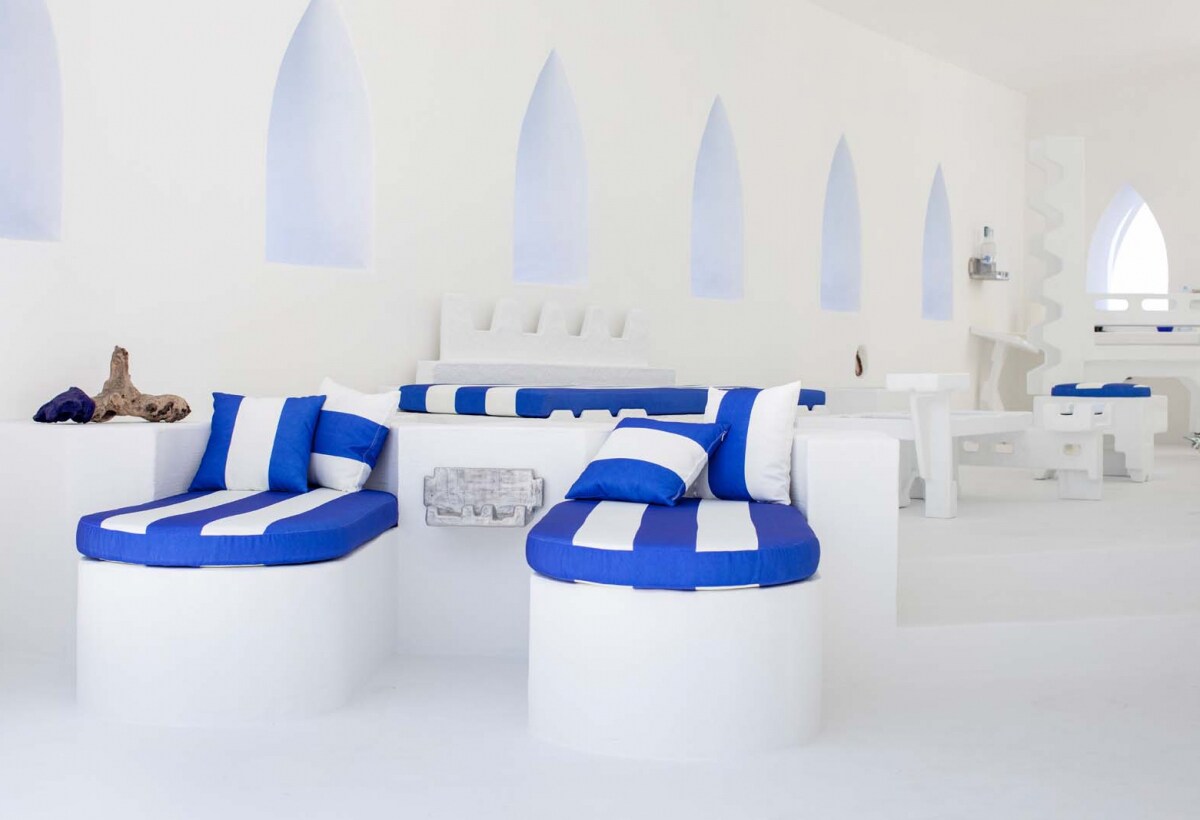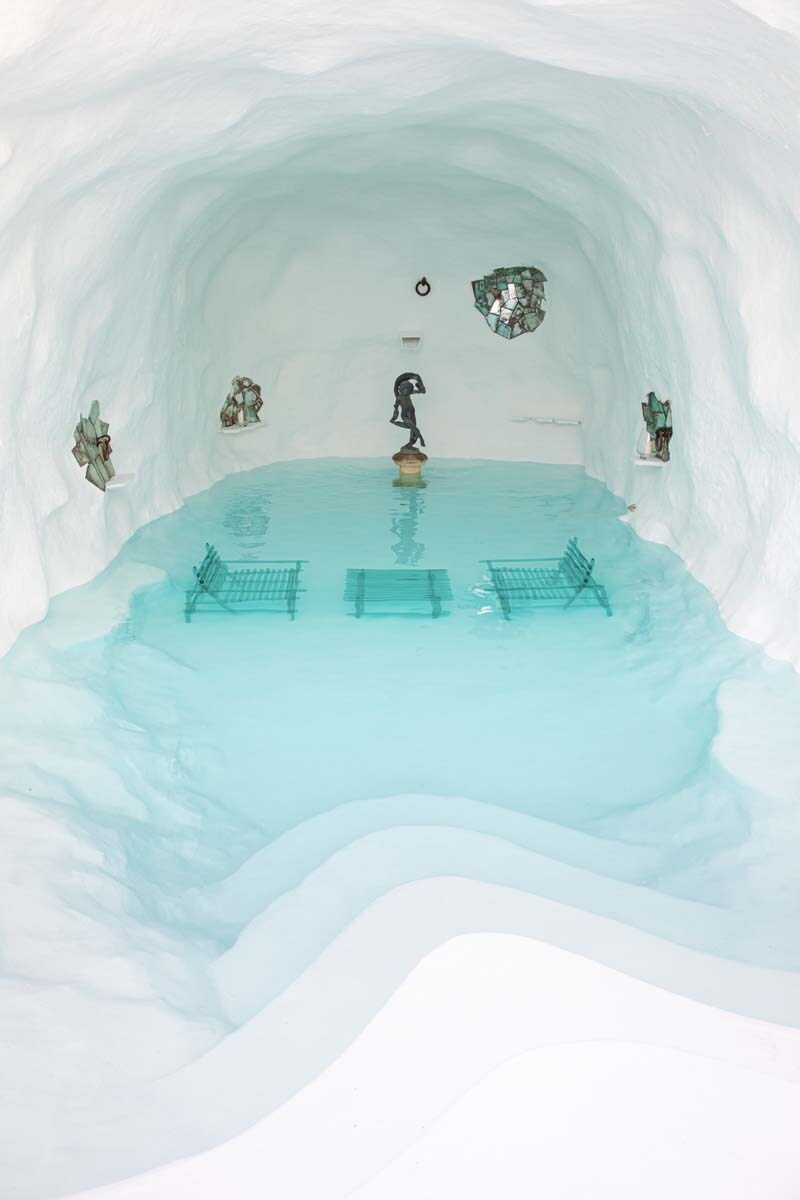Off the coast of Positano, halfway to the island of Capri, there is a small private archipelago called Li Galli.
It is formed by three small islands known as Le Sirene: the large Gallo Lungo, La Rotonda and La Castelluccia.
In Book XII of the Odyssey it was described by Homer as the ‘home’ of mythological aquatic creatures, half woman and half fish. Beings which in the Argonautica of Apollonius of Rhodes were instead “maidens in body, and partly birds.”
Women with the heads of roosters. Galli, in Italian: hence the name. It is a magical place.
The rocky promontory of Gallo Lungo slopes steeply into the sea.
The flourishing Mediterranean vegetation, dense with maritime pines at the top, hides a setting that seems wild at first glance. But then there is a dock, a pathway marked by stone walls, terraces and works of architecture.
The charm of the island lies above all in its strong relationship with art in all its forms. In the 1900s the illustrious owners were Russian dancers and choreographers, first Léonide Massine and then Rudolf Nureyev.
In the early 2000s, after a period of neglect, it was purchased by the entrepreneur Giovanni Russo, who with the help of his wife Nicoletta, with a passion for art collecting, has restored the original splendor of the place.


Going up from the dock of Gallo Lungo, one comes across two small structures inserted in the rocky slope, and built over medieval vestiges and even older ruins: a heliport and – on one of the two peaks of the island – the Villa Centrale.
The latter stands atop the ashes of an ancient Roman domus, whose hidden traces remain like indelible tattoos on the earth.
It dates back to the 1920, when Massine came to Italy with Picasso, acquired the island and then moved there, although the locals called him “the mad Russian who bought a rocky island where only rabbits can live,” a place impossible to farm.
He tells this story himself in the book My Life in Ballet (Macmillan, London-New York 1968). But after years of work he was able to tame the wild nature of the place, and make it productive.
The rooms are decorated with an extraordinary collection of Ottoman tiles in tones of green, blue and orange, with which Nureyev left signs of his presence.
The floor, replaced by Giovanni and Nicoletta, is now in glowing, pale Vietri ceramics installed with a herringbone pattern.
An elegant surface that amplifies the Capri white effect, and together with many vases, sculptures and tables by artisan-artists of the Amalfi coast confirms the research of the owners, seeking to make use of local products of the highest quality, in tune with the environment and the setting.
A few meters away, there is a more private area, a low work of architecture in white concrete.
The design plays with different levels of outdoor space, in a sequence of terraces and outlooks. Pools desired by Giovanni and carved into the rock by local craftsmen act both as reservoirs and as places for rest and meditation. Giovanni sees himself as “a guest of the island, which I have the honor to care for and inhabit.”
This idea of care is akin to curating, in the deeper and wider sense of the term: an action of environmental protection and enhancement, but also with art to put on view.
The whole island, in fact, becomes a diffused Wunderkammer, punctuated by marvelous objects.
The renewal of the landscape and the architecture, the result of erudite, precise and delicate work, unfolds in almost spontaneous interventions conducted by the ‘guardians’ of the island, with the insertion of pieces of art and design of very high value.

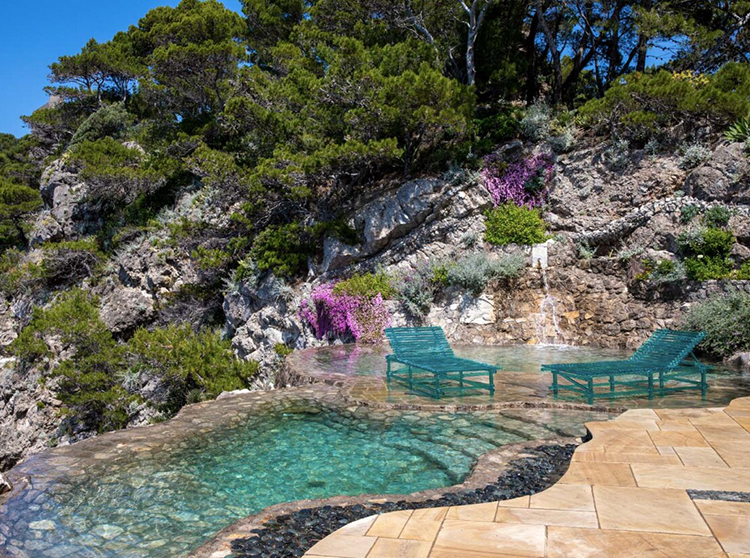
“We like to juxtapose the creations of great masters with those of young artists, or of fine craftsmanship: Ettore Sottsass, Joe Colombo, Konstantin Grcic, Jacopo Foggini, Formafantasma, Luca Cipelletti, Martino Gamper, Michael Anastassiades, Architetti Artigiani Anonimi, and others,” says Nicoletta.
Slow timing is perhaps the secret of this exemplary ‘creation of landscape.’
Transformations and insertions are done little by little, step by step, allowing nature to absorb their impact. With respect for history.
The Saracen tower with a rehearsal room on the first floor has been transformed into a space for hospitality, conserving its old platform in Siberian pine where the great artists of the past danced.
A loft contains instruments for a quartet, with a drum set in honor of Tullio De Piscopo. The walls feature old photographs. In the silence, one seems to hear echoes of notes and dance steps from the past.
On the ceiling of the master bedroom, there is a fresco by the artist Emil Michael Klein: patterns of blue lines shifting into pink form ‘infinities’ that are almost imperceptible, unless you raise your gaze to seek them. The vision of the project is ambitious.
“There seems to be a bond between a certain type of island and dreams. Or perhaps the fact is that islands such as this one have the ability to attract dreamers,” writes Gavin Francis in Island Dreams: Mapping an Obsession (Canongate Books, London, 2020).
The great desire (never fulfilled) of Massine was to transform Li Galli into an international arts center open to young people.
Today, in another ‘artform,’ this is happening. In the spring of 2022 the young Savvas Laz, who sees Nicoletta as a sort of contemporary patron who supports new talents, completed a restyling project for a boat storage grotto.
This is the second environmental experiment in which the Greek designer-artist has applied the ‘Trashformers’ method: discarded polystyrene packing crates are covered with fiberglass and resin to create useful objects.
The finishing materials, like mirrors or fabric, define the function and demonstrate the potential of the reinvention of refuse, as well as the role it plays in the contemporary aesthetics of the Anthropocene.

“At Li Galli, the Trashformers are immersed in a totally white space dug into the rock. With touches of blue, the Grotta Bianca references the two-tone aesthetic of the Cyclades and the Mediterranean.
The result is a primitive-futuristic installation that combines walls and objects into a whole, creating a setting that pays tribute to the architectural language of the island, in an atmosphere of relaxation and escape,” Savvas says.














